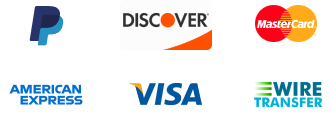The global oxidation hair dye market size was valued at USD 35.75 billion in 2024 and is estimated to reach USD 76.12 billion by 2033, growing at a CAGR of 8.76% during the forecast period (2025–2033). Rising disposable incomes, especially in emerging markets like India and China, are enabling consumers to spend more on premium and salon-quality hair dye products. This trend is expanding the market for both professional and at-home hair color products.
Oxidation hair dye is a type of permanent hair color that works through a chemical process involving oxidative reactions. The primary ingredient in these dyes is usually an oxidizing agent, such as hydrogen peroxide, which helps to open the hair cuticle (the outer layer of the hair shaft). This allows the dye molecules to penetrate into the cortex, where the color is deposited. When mixed, these components undergo a chemical reaction that results in the hair color changing. These dyes are commonly used for coloring hair, providing a range of shades from natural tones to vibrant colors, and are popular for their long-lasting results.
The growing demand for hair color solutions is driven by changing beauty trends and increasing self-expression. Consumers are using hair dyes not only to cover gray hair but also to enhance their personal style and experiment with different looks. This trend is particularly notable among older populations.
Moreover, as the popularity of beauty grooming and haircare routines continues to rise, especially in urban areas, the demand for hair color products is expanding. Brands are responding by offering a variety of formulations to meet diverse consumer needs.
Health concerns about the chemicals found in traditional hair dyes are a significant restraint for the market share. Many conventional dyes contain substances like ammonia, parabens, and resorcinol, which can cause skin irritation, allergic reactions, and potential long-term health risks with repeated exposure. As consumers become more aware of these risks, particularly those related to scalp sensitivity and hair damage, they are shifting towards more natural or organic alternatives. This growing preference for chemical-free products challenges traditional hair dye manufacturers, pushing them to innovate and develop safer, gentler formulas to meet consumer demand for health-conscious options.
Innovations in hair dye formulations and application methods are creating new opportunities in the market. Consumers are increasingly seeking convenient, mess-free, and damage-free coloring solutions, pushing brands to develop advanced technologies.
Such innovations not only enhance user experience but also cater to the rising demand for professional-quality results at home, making hair coloring more accessible and hassle-free.
| ATTRIBUTES | DETAILS |
|---|---|
| Study Period | 2021-2033 |
| Historical Year | 2021-2024 |
| Forecast Period | 2025-2033 |
| By Type |
|
| By Applications |
|
| Regional Insights |
|
PPD (p-Phenylenediamine) segment dominates the global market due to its ability to provide long-lasting, rich, and vibrant colors. They are widely used in professional salons and at-home applications, making them highly popular among consumers seeking high-performance and consistent results. Despite concerns about allergic reactions in some users, PPD-based dyes remain the preferred choice due to their affordability and effectiveness. The widespread availability of these products in various color ranges, along with advancements in formulations to minimize irritation, continues to drive their dominance in the market.
Commercial use segment of the oxidation hair dye market share leads in terms of revenue generation, particularly driven by the salon industry. Professional salons require high-quality, reliable hair color products to meet the diverse demands of their customers. These products offer superior color results, and professional-grade formulations often provide more long-lasting effects compared to those intended for home use. Commercial-grade hair dyes are frequently formulated with higher-quality ingredients, catering to specific needs such as gray coverage or hair health, making them the go-to choice for salons and hairstylists worldwide, contributing to their market dominance.
The Asia-Pacific region is rapidly becoming the dominant force in the global market, driven by a combination of rising disposable incomes, expanding middle-class populations, and a growing inclination towards beauty and personal care products. Countries like China, India, and Japan are at the forefront of this growth, with the demand for hair dye products consistently increasing.
In China, the booming beauty industry, fueled by a younger, fashion-forward population, is significantly contributing to the rise in oxidation hair dye consumption. The preference for bold hair colors among Gen Z and millennials, particularly in urban areas, is boosting the demand for products that provide long-lasting and vibrant results. India's market is also growing rapidly, driven by increasing exposure to global beauty trends and a large population seeking affordable yet high-quality hair care solutions.
Moreover, Japan's beauty-conscious population has led to high per capita consumption of hair dye products, with a focus on premium, gentle formulations that cater to hair health. The region’s diverse beauty culture and emphasis on self-expression have positioned Asia-Pacific as a key player in the innovation of new shades and formulations in the market, ensuring its dominance in the coming years.

Request Table of Contents (TOC), Please Fill below form



